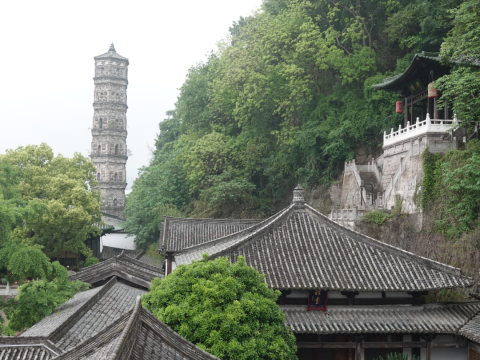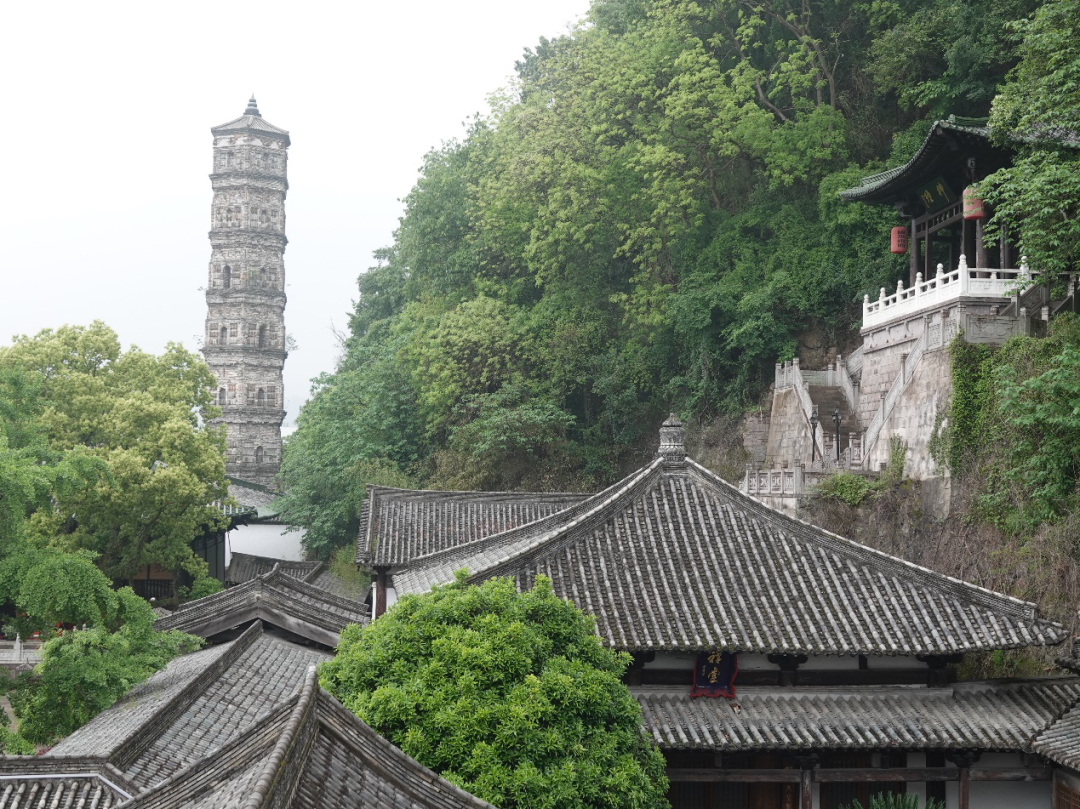
Wandering around Linhai Ancient City
2021.4.24
Taizhou Linhai, this name is not unfamiliar to me at all. In the 1980s and 1990s, I visited Linhai twice, for shopping together and once to learn from the experience. Both times left a very good impression on me. It is a pity that every time I stay in the ancient city, I fail to fully appreciate the charm of the ancient city.

This time I have been to Linhai for the third time, now that I am over seventy years old, just to make up for that "concern". When we came to the entrance of the ancient city, we were even more interested when we saw the stone tablet marking the year when the ancient city was founded. I have visited many ancient cities for sightseeing, such as Nanjing City Wall, Kaifeng City Wall, Xi'an City Wall, Beijing City Wall... But as a county-level ancient city, there are really only a few ancient city walls that can still be preserved in such good condition. Linhai Ancient City should Let's just say it's second to none. Counting from the Eastern Jin Dynasty, through the Tang, Song, Yuan, Ming and Qing dynasties, it has been repaired and reinforced in successive dynasties. Linhai Ancient City has a history of 1,600 years. It is not only known as the "Jiangnan Great Wall", but also serves as the template for the "Badaling".
The ancient city is close to the East Lake. A towering archway is inlaid with the four characters "Xiongzhen Southeast". If you follow the "Hundred Steps" and count the 198 stone steps, you can climb the tower. Unfortunately, it was drizzling today, and the old man did not dare to take any more risks for fear of slippery roads. So we went to the Lingjiang River and took the road to climb the tower.

Climbing high and looking into the distance, it is really majestic and magnificent. The winding city wall is about six kilometers long. It is backed by Beigu Mountain on one side and Jinzi Mountain on the other. It is close to the river and the lake. The terrain is dangerous, surrounded by mountains and rivers, and it is as solid as gold. Ancient city walls generally consisted of walls, parapets, crenels, towers, turrets, city gates, etc. The ancient city near the sea had all of them. I really admire the wisdom of the Linhai people. In addition to the four city gates of Jingyue, Xingshan, Zhenning and Wangjiang, they also built walls and urns.
Don't underestimate the curved urn city. It can prevent floods and enemies. Countless times, the "city gates were lost" due to raging floods, but the city walls remained unmoved. It is precisely because of the flood control function that the Wengcheng was spared from the danger of being demolished during the Northern Song Dynasty. Instead, it was continuously reinforced and improved. During the Ming Dynasty, Japanese pirates tried to sneak in through the Wengcheng, but they became the turtles in the urn and were killed in one fell swoop. Qi Jiguang led the garrison to fight against the Japanese with "nine battles and nine victories" and became famous all over the world.
The overall design of the city wall can be guarded in sections, so each section has a fort and a beacon tower. The beacon tower is divided into two levels: the lower level is the warehouse or barracks, and the upper level is the platform. There are concave and convex crenels or shooting holes around the platform, and there are towers on the platform, named Baiyun, Yanxia, Gujing, Pinghai, etc., which are not only watchtowers, command towers, but also the commanding heights for sniping the enemy.


Within the city wall are neighborhoods and alleys, criss-crossing and extending in all directions, where merchants gather. Along the way, the streets and alleys are marked with place names in black letters on a white background, such as Yidongtian, Fengxianfang, Yingxianfang, Laxiangkou, Anletian, etc., which are quite eye-catching. The most popular among tourists is probably Ziyang Ancient Street, which is about one kilometer long and can be called the first ancient street in Linhai. It is said that Ziyang Street was originally nameless. Because there was a "Ziyang Palace" in the north, later generations used to call it "Ziyang Street". There are row upon row of shops in Linhai Ancient Street, but unlike some local ancient cities where the products are all the same, they still maintain local characteristics and are full of traditional culture. Walking through a time-honored scale store, there are large scales, small scales, micro scales, and large and small scales... They are all handmade by hand. When Teacher Zhu saw that Xiaofang and I were fascinated, he told me, "Then It’s a measurement culture.” You see, educated people are different. This is really the finishing touch.
The ancient city of Linhai has always been a treasured place where Taoism, Buddhism and Confucianism blended with each other, so it has a strong flavor of Chinese culture. There are Dacheng Hall, Longxing Ancient Temple, and Jinshan Towers. Walking through the streets and alleys, you can see the names of monuments and people, and the streets are connected with each other. It not only has many places of interest, but also retains many Huizhou-style buildings that incorporate architectural elements from Fujian, Zhejiang, and Jiangxi, making it dizzying to see.
In ancient times, this was a place visited by literati; now, Linhai has become a must-visit destination for tourists from all over the world.
